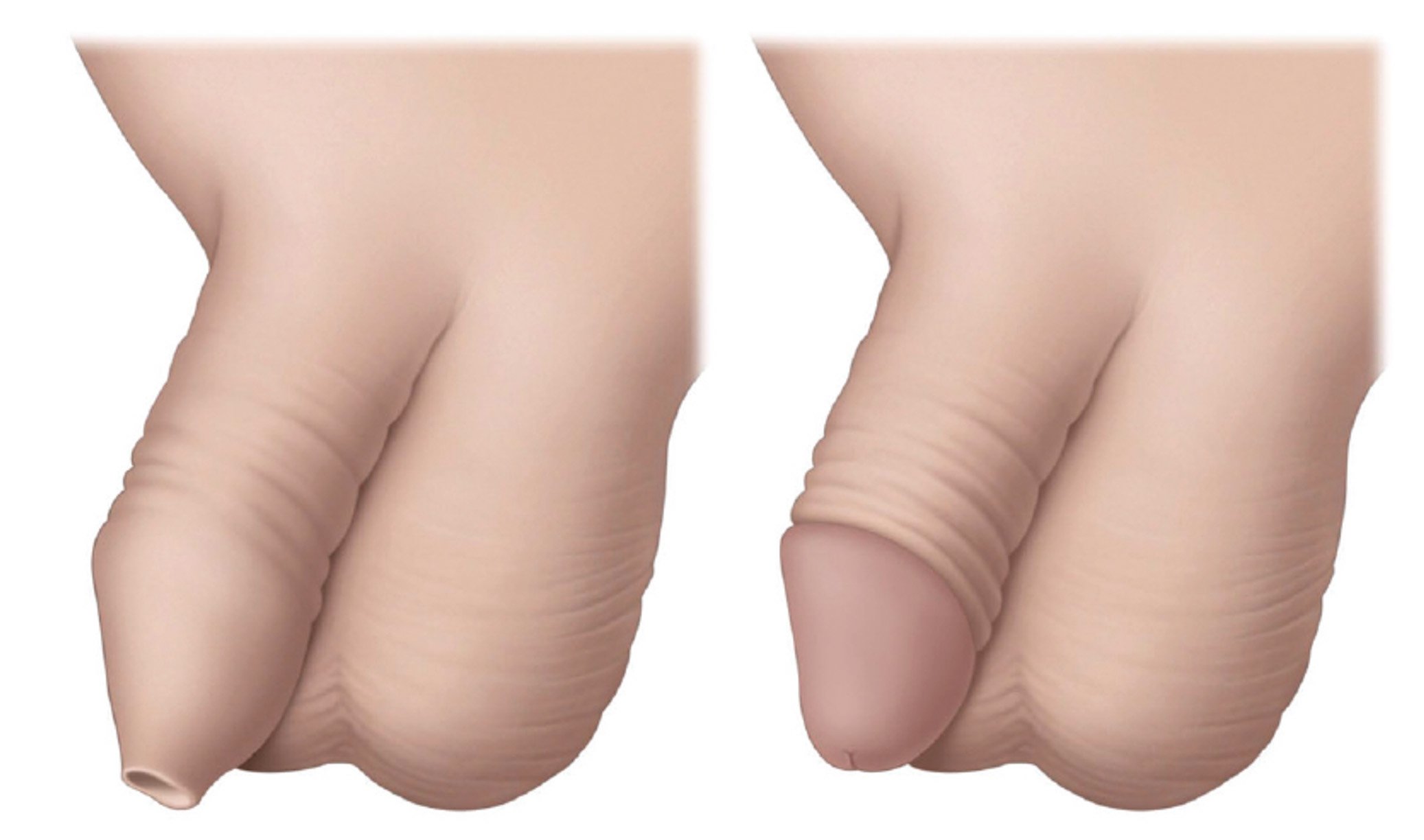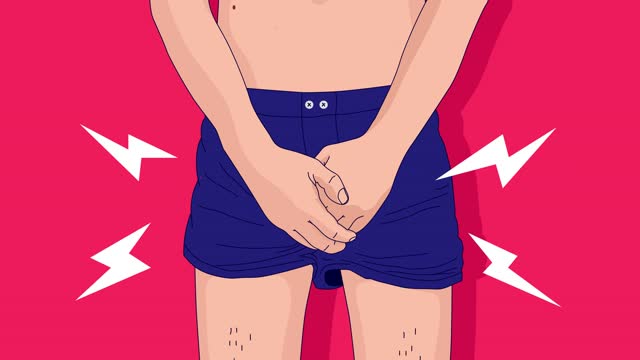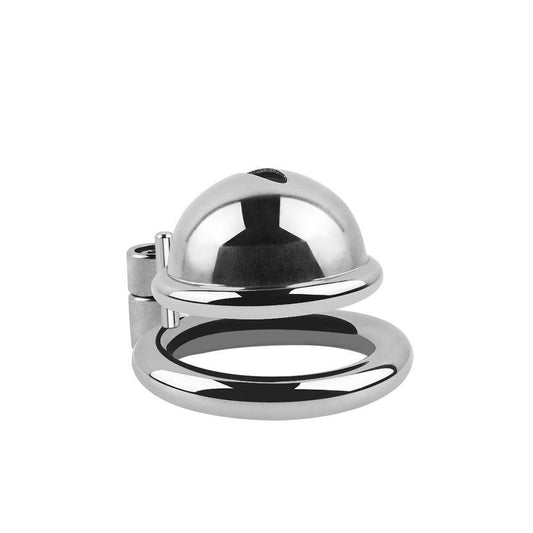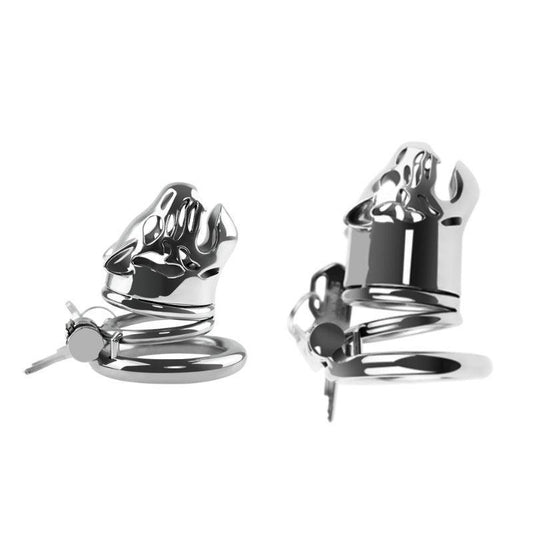El uso de una jaula de castidad requiere un compromiso con la higiene y el cuidado, especialmente para las personas no circuncidadas. Las rutinas de limpieza adecuadas y la atención a la comodidad son esenciales para prevenir infecciones y mantener la salud general. Aquí tienes una guía completa para ayudarte a usar tu jaula de castidad de forma responsable y cómoda.

1. Aspectos básicos de higiene para personas no circuncidadas
El prepucio puede acumular sudor, grasa y bacterias, lo que, combinado con las limitaciones de una jaula de castidad, puede provocar irritación o infección. Para mantener la limpieza:
Retire la jaula de castidad a diario (o con la mayor frecuencia posible) para limpiarla a fondo. Use agua tibia y un jabón suave sin fragancia para limpiar el prepucio y el glande. Asegúrese de retraer completamente el prepucio para lavar debajo.
Después de limpiar, seque completamente la zona con una toalla suave. La humedad atrapada debajo del prepucio o en la jaula puede provocar infecciones por hongos.
Considere utilizar un gel antibacteriano o toallitas diseñadas para pieles sensibles. Evite productos agresivos que puedan alterar el equilibrio natural del pH de su piel.

Las jaulas bien ventiladas requerirán menos limpieza, consulte más informaciónaquí
2. Cómo elegir y usar la jaula adecuada
La jaula de castidad adecuada puede marcar la diferencia en cuanto a comodidad e higiene:
Opte por jaulas fabricadas con materiales seguros para el cuerpo, como silicona de grado médico o acero inoxidable. Estos materiales son más fáciles de limpiar y tienen menos probabilidades de albergar bacterias.
Una jaula bien ajustada evita movimientos o pellizcos innecesarios, que pueden provocar irritación. Mida con precisión y elija un tamaño que permita que el prepucio se retraiga de forma natural sin que quede demasiado apretado.
-
Ventilaciones y accesibilidad :
Seleccione una jaula con ventilación y aberturas adecuadas. Este diseño garantiza el flujo de aire y le permite limpiar sin tener que quitar la jaula por completo.

3. ¿Cuánto tiempo debes usar una jaula de castidad?
El uso continuo de una jaula de castidad puede ser seguro si se mantiene una higiene adecuada. Sin embargo, para evitar infecciones o molestias:
Si eres nuevo en el juego de castidad, usa la jaula por períodos cortos (por ejemplo, 2 a 4 horas) para permitir que tu cuerpo se adapte.
Inspeccione la zona para ver si hay enrojecimiento, hinchazón o secreción inusual. Estos podrían ser signos de irritación o infección.
Incluso los usuarios experimentados deben quitarse la jaula cada 24-48 horas para limpiarla a fondo y dejar que la piel respire. El uso prolongado sin descansos puede aumentar el riesgo de úlceras por presión e infecciones.

4. Prevención de las molestias
La incomodidad puede restar valor a la experiencia, pero a menudo se puede evitar:
Aplique un lubricante a base de agua alrededor del anillo de base y en los puntos de contacto para reducir el roce. Evite los productos a base de aceite que pueden degradar las jaulas de silicona.
Si nota pinchazos o tirantez, intente ajustar la posición de la jaula o cambiar a un tamaño más grande.
Beba mucha agua para asegurar una micción normal y eliminar las bacterias del tracto urinario.

5. Abordar las preocupaciones comunes
Los olores persistentes suelen indicar una limpieza inadecuada. Reevalúe su rutina de higiene y asegúrese de que la jaula esté limpia cada vez que la saque.
Los síntomas como sensación de ardor, enrojecimiento o hinchazón requieren atención inmediata. Retire la jaula, límpiela bien y consulte a un profesional de la salud si los síntomas persisten.
El prepucio y el glande pueden sentirse más sensibles después de un uso prolongado. Aumente gradualmente el tiempo de uso para desarrollar tolerancia.
Reflexiones finales
Usar una jaula de castidad como persona no circuncidada puede ser seguro, placentero e higiénico si se hace con cuidado y atención. Priorice la limpieza, escuche a su cuerpo y nunca dude en tomarse un descanso si surgen molestias o problemas de salud.
El mantenimiento adecuado y el autoconocimiento son las claves para una experiencia de castidad satisfactoria y sin problemas. ¡Manténgase seguro y limpio!













